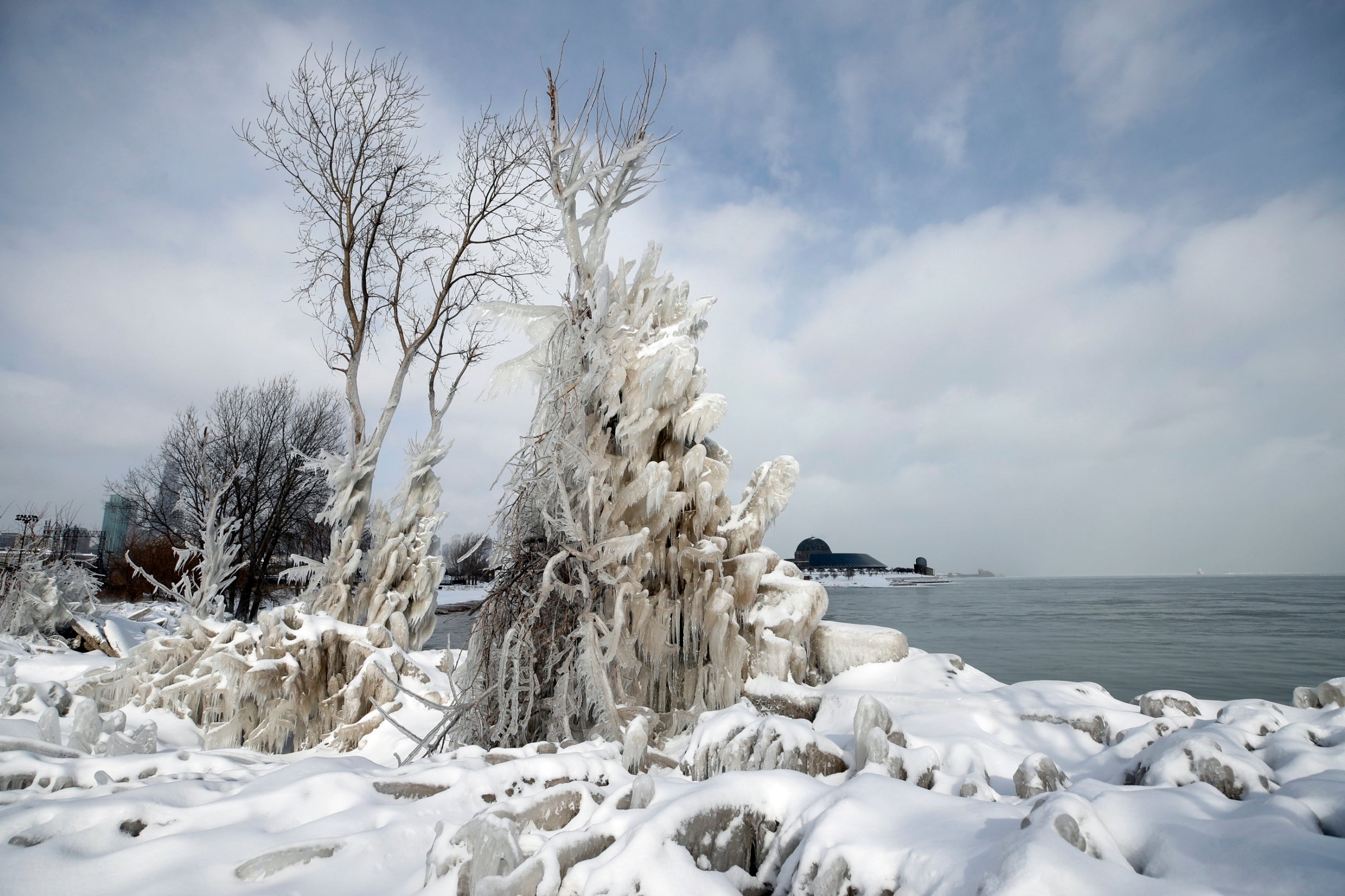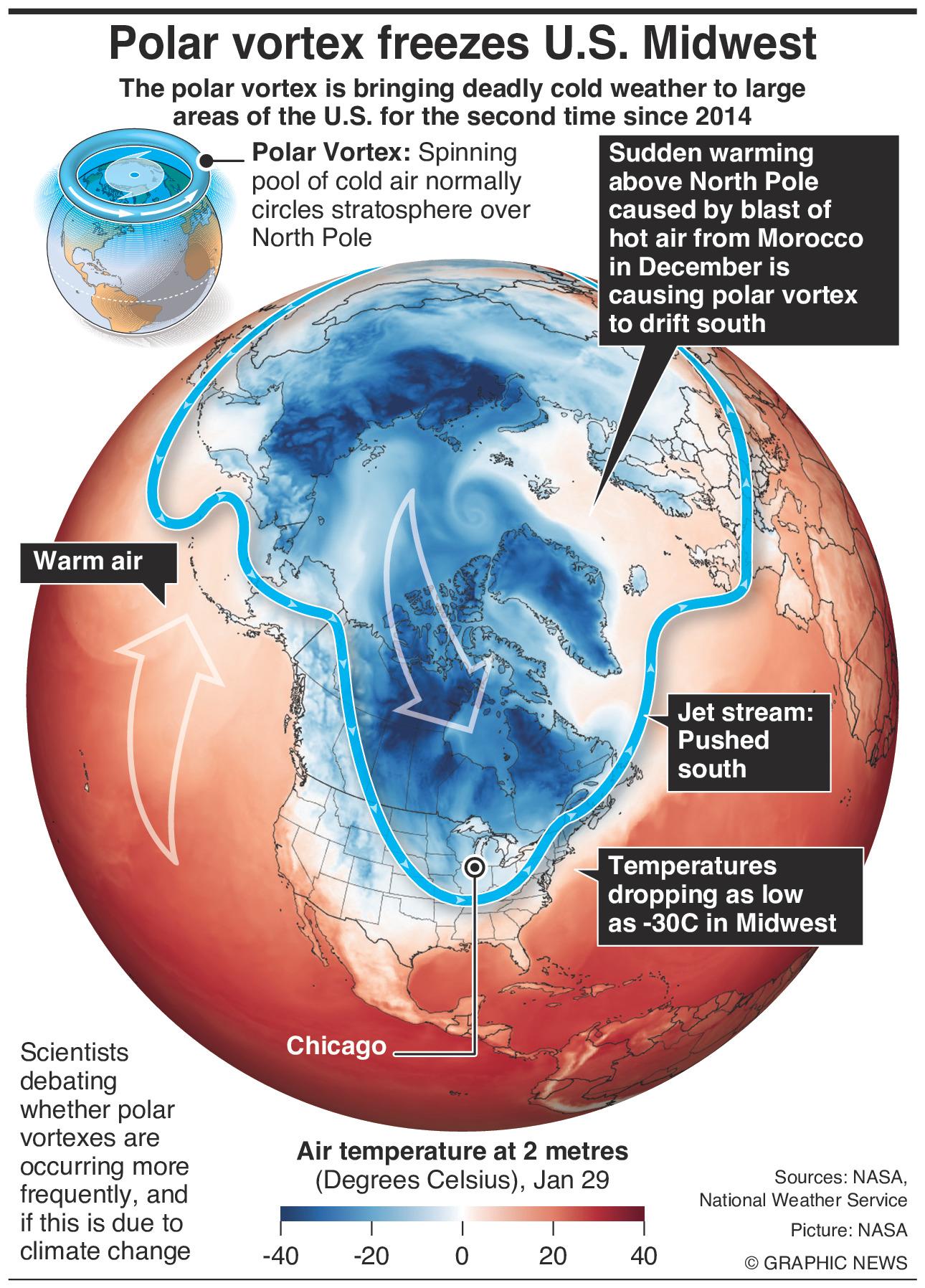Polar Vortex: What is the weather phenomenon and how should you prepare for one?
Below-freezing temperatures are expected to continue into Thursday

Your support helps us to tell the story
From reproductive rights to climate change to Big Tech, The Independent is on the ground when the story is developing. Whether it's investigating the financials of Elon Musk's pro-Trump PAC or producing our latest documentary, 'The A Word', which shines a light on the American women fighting for reproductive rights, we know how important it is to parse out the facts from the messaging.
At such a critical moment in US history, we need reporters on the ground. Your donation allows us to keep sending journalists to speak to both sides of the story.
The Independent is trusted by Americans across the entire political spectrum. And unlike many other quality news outlets, we choose not to lock Americans out of our reporting and analysis with paywalls. We believe quality journalism should be available to everyone, paid for by those who can afford it.
Your support makes all the difference.As frigid temperatures and life-threatening winds batter parts of the US, cities in the Midwest are shuttering to keep citizens inside and safe from the dangerous cold.
Currently, below-zero temperatures have been reported throughout the area, with wind-chill temperatures predicted to reach a record-low of -31C (-25F) in Chicago by Thursday with wind-chill temperatures dipping to below 48C (-55F).
The sudden extreme temperatures are the result of a polar vortex, a weather phenomenon that occurs in the winter and impacts parts of the northern hemisphere.
What is a polar vortex?
The polar vortex is a low-pressure area comprised of cold air that sit above the Earth’s north and south poles.
The area of cold air is present throughout the year but is typically kept in place in the arctic regions by winds moving in a counter-clockwise direction at the north pole and clockwise at the south pole.
“It ALWAYS exists near the poles,” the National Weather Service states on its website.
However, during the winter months, the polar vortex above the north pole can expand into the northern hemisphere - bringing freezing cold temperatures with it.
What causes a polar vortex?
The polar vortex, which is naturally occurring, can split and stray if the winds are weakened - as is the case when temperatures warm in the stratosphere.
When this occurs, the polar vortex sends cold air south, which can affect the United States, Europe, and Asia.

According to the NWS, this occurs frequently: “Many times during winter in the Northern Hemisphere, the polar vortex will expand, sending cold air southward with the jet stream.”
How do you prepare for a polar vortex?
With millions of Americans currently facing below-freezing temperatures as a result of the polar vortex, it is important to take extreme precautions to protect against the cold.
If you must go outside, dress appropriately in several layers and ensure that there are no exposed areas of skin.
In these temperatures, it takes as little as five minutes for frostbite to begin.
You should also cover your mouth with a scarf and avoid talking or taking deep breaths, according to the NWS, to avoid damaging your lungs with cold air.
Children, elderly, and those with weakened immune systems should avoid going outside.
Additionally, ensure that you have adequate heating or seek out alternative housing until the temperatures rise.
Many cities have opened warming centres where people can stay if they do not have proper heating available.
In parts of the US where the polar vortex has led cities to declare states of emergencies, it is integral that people take the proper precautions and do not spend significant time outside.
When was the last polar vortex?
As previously stated, cold temperatures caused by a polar vortex are not uncommon.
The last polar vortex occurred in January 2014, according to the NWS, and before that in 1977, 1982, 1985 and 1989.
Where is the polar vortex now?
On Wednesday, parts of the US were still in the midst of the bitter cold.
According to meteorologists, temperatures will continue to plunge in the Midwest until Thursday.
Chicago, Illinois is facing the brunt of the cold, but the impact can be felt in cities in Iowa, Minnesota, North Dakota, South Dakota, Wisconsin, and parts of Kansas, Missouri, Montana and Nebraska.
Join our commenting forum
Join thought-provoking conversations, follow other Independent readers and see their replies
Comments